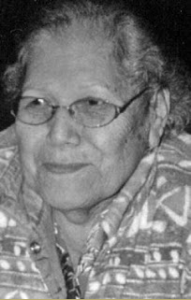Clarence Smith was the writer of The Legend of the Big Dipper in Volume One, Number Two of The Indian Craftsmen, a publication put out by the Carlisle Indian Industrial School. Clarence entered the school when he was eighteen in the year 1906 (http://carlisleindian.dickinson.edu/sites/all/files/docs-ephemera/NARA_1327_b070_f3463.pdf) according to his student records, and was last recorded in the school files in 1911 at which time he left and returned to his home reservation in Wyoming. Before going to the Carlisle Indian School, Clarence’s files indicate that he a full bred member of the Arapaho Tribe in Wyoming and was living on the Shoshone Reservation as an orphan. The files do not reveal what the cause of death was of his parents or at what point in his life they passed away. Clarence ended up at the Carlisle Indian School after the superintendent of his reservation wrote the superintendent of the Carlisle Indian School a personal letter asking if the School would take Clarence into their ward for some time. The superintendent of the reservation seemed to feel that it would be a good thing for Clarence to get away from the reservation following the death of his parents and appears to be writing the letter to the School out of genuine concern for the boy. He wrote “This boy is an orphan, and I think the best thing for him is to go away for a time and make something of himself. He is anxious to go and is a good boy” (http://carlisleindian.dickinson.edu/sites/all/files/docs-ephemera/NARA_1327_b070_f3463.pdf). This excerpt helps define Clarence A. Smith’s character and disposition towards the school. It allows some assumptions to be made about how he felt about his time there, and when paired with his evaluation cards from the Carlisle Indian School records, they form a pattern of good behavior and commitment to the school, as though it was something that he really did want for himself. These factors help support the claim, that will be made later, that Clarence A. Smith was an assimilator compared to his peers. According to his records, he was a “very good” student and an “excellent” baker, although at times he was messy in the dormitory and his conduct marks were not consistently great (http://carlisleindian.dickinson.edu/sites/all/files/docs-ephemera/NARA_1327_b070_f3463.pdf).

He seems to have had a very successful academic career at the Carlisle Indian School, and unlike many of his classmates, his health was always exemplary (http://carlisleindian.dickinson.edu/sites/all/files/docs-ephemera/NARA_1327_b070_f3463.pdf). Clarence A. Smith left the Carlisle Indian School in June of 1911 after being enrolled for a five year term, he left as a skilled baker and returned home to Wyoming. The last entry in his student file is a clipping that says he “went home… [to] Ft. Washakie, Wyoming” where he “is getting along well” and “he wishes to be remembered to his friends” (http://carlisleindian.dickinson.edu/sites/all/files/docs-ephemera/NARA_1327_b070_f3463.pdf). At this point in his life the sources which had documented it thus far disappeared. After some research, it appears that one more source regarding Clarence’s life after the Carlisle Indian School may have been found. In 2009 a woman by the name of Edith S. Dewey passed away in Casper, Wyoming and in her obituary it was revealed that she was the daughter of a man named Clarence Smith.

According to her obituary, she was born in Arapahoe, Wyoming in 1928 to a man named Clarence Smith and a woman named Catherine Wolf Elkins Smith (http://www.foundinmyfamilytree.com/category/smith/dewey/faler/). While it cannot be confirmed with certainty that this is the same Clarence Smith, it appears to be highly likely. Firstly, it were the same Clarence, he would’ve fathered Edith at the age of 40, which is a little old but there is no way of telling how old her mother was at the time; and secondly, Edith passed away only three hours from Fort Washakie, Wyoming, the location which Clarence’s trail in the school records ended.
